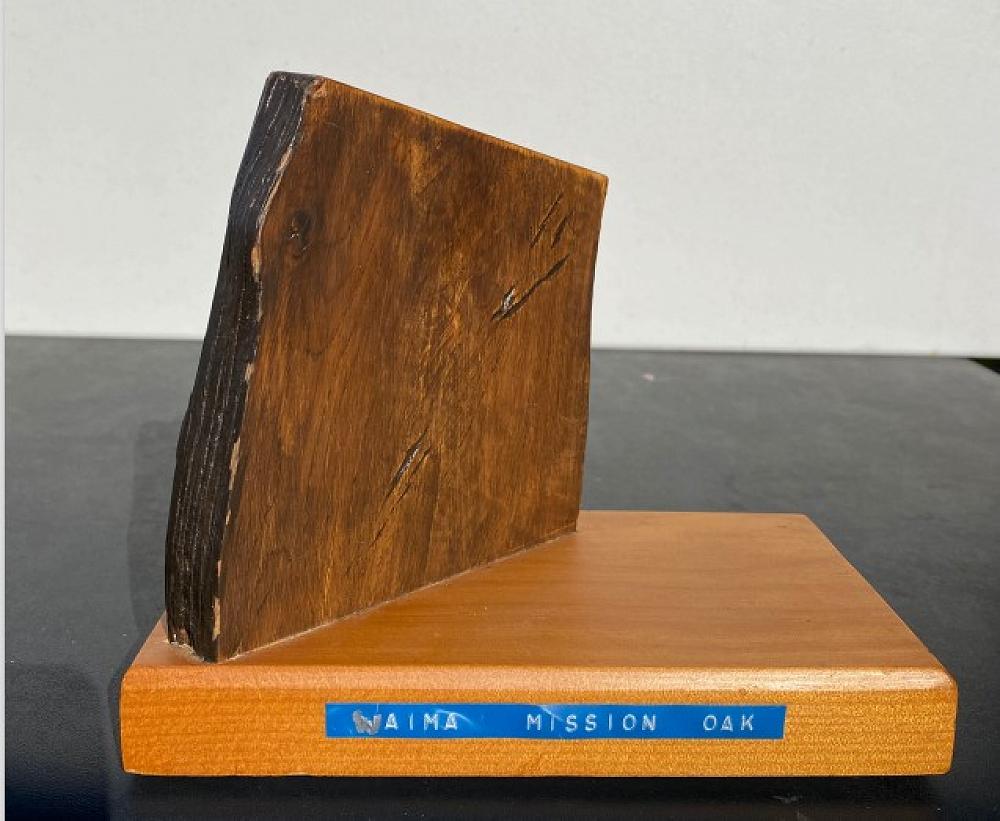
Memorabilia Points us to the Future
Several weeks ago, I was offered boxes of treasures accumulated over the years by the late Rev Phil Taylor and Rev Barbara Miller-Taylor to look through. From those I gleaned valuable pointers related to Methodist dreams, as seen through their eyes.
Amongst Rev Barbara’s treasures was a wooden object that speaks to us of how the gospel message may be contextualised in Aotearoa, New Zealand. The object is made from two milled pieces of timber: one oak, embedded obliquely at right-angles to the other of kauri. A handwritten note with this taonga tells the story of how this was created by the Methodist Maori women of Northland and presented in 1991 to the Methodist Women’s Fellowship of Waitemata: symbolising that for an authentic expression of Christianity to flourish in Aotearoa it had to be firmly grounded in the land where it was planted: a tauiwi brand cemented in the iconic indigenous landscape.
The oak shaft was cut from a branch of the Waima oak, which had a girth of six metres and once stood some 24 metres high in the grounds of the Wesleyan Mission Station at Waima. The tree had been planted by Rev John and Mrs Sarah Warren when they were stationed to the Hokianga in 1839. In 1922, at the time of the centenary of Methodism in New Zealand, some 500 people sat in the shade of this tree.
Of further interest, accompanying this taonga is a newspaper cutting, headed ‘From little acorns’, published sometime in 1996 or 1997. The article recalls that when kiwi visitors to London’s Museum of Methodism were dismayed to find no representation of New Zealand in the collection, it was ‘arranged for a mounted piece of the Waima oak on a Kauri base’ to be sent to the Museum. Perhaps the taonga described above mirrored this one. All of this provides an insight into the significance of the Mission Stations at Mangungu (1828) and Waima (1839) that were successors to the 1822 Wesleyan Mission Station at Kaeo.
This year marks the bicentenary of the beginnings of that Wesleyan journey in Aotearoa. The Conference in November in Kerikeri, near to this first Mission site, will provide opportunities for reflection on those first steps in Aotearoa. Attendees will reflect on the path trodden since, and consider hopes for the future. Plans are well underway for the Wesley Historical Society annual meeting to feature a play written by Geoff Allen called Amazing Love / Aroha Kiaora. The heartfelt dialogue has Catherine Leigh – the partner in this missionary enterprise with Rev Samuel Leigh – reflecting on her experience in this, her new land, and includes conversation with her husband and her recollection of the words of Ngati Uru rangatira, Te Ara.
The emerging Conference programme provides opportunities for visits to Kaeo and Mangungu, preceded by visits to Paihia and Waitangi, and a recognition of the place of Rev Walter Lawry in the story of Aotearoa and Tonga. In Aotearoa Rev Lawry is recognised in the moves to provide education based on Western constructs for a “selected number of natives, that they may become more efficient teachers in matters of religion and civilization”: the forerunner to what is now Wesley College.
